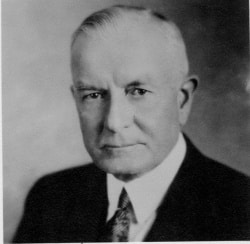Over the years there’s a story I’ve heard a number of times. It’s simply referred to as ‘The IBM Story’. I came across it again recently and feel it is worth sharing.
The story goes that Thomas J. Watson, the president of IBM, saw a woman operator sitting idly at her machine. He asked her why she wasn’t working. The woman replied: ‘I have to wait for the setup man to change a tool setting for a new run’. ‘Couldn’t you do that yourself?’ Watson asked. ‘Of course,’ said the woman ‘but I’m not supposed to’.
Watson discovered that each worker spent several hours each week waiting for the setup man, and that it would only take a marginal additional training for the worker to learn how to set up her own machine.
Watson had machine setup added to the training schedule and setup became part of the operator’s job.
This sparked a review of the processes and it was found that a similar amount of time was wasted waiting for the inspector. So inspection of a finished part was also added to the operator’s job.
Enlarging the job in this way produced not only improvements in output but there was also an unexpected improvement in quality. Each worker became more accountable and responsible for their work.
The moral of the story is that it pays to continually review and refine your processes. Requirements may change, and technology moves on. By continually reviewing workflows you can fine tune your processes to meet an ever changing business environment.
Thomas John Watson joined IBM (then named CTR) in 1914 (and no I wasn’t there then, I didn’t work with IBM until seventy four years later :-). At that point, the revenue was $9 million and the company employed 1300 staff. When he died in 1956, IBM’s revenues were $897 million, and the company had 72,500 employees. There’s a man who knew how to get results.







